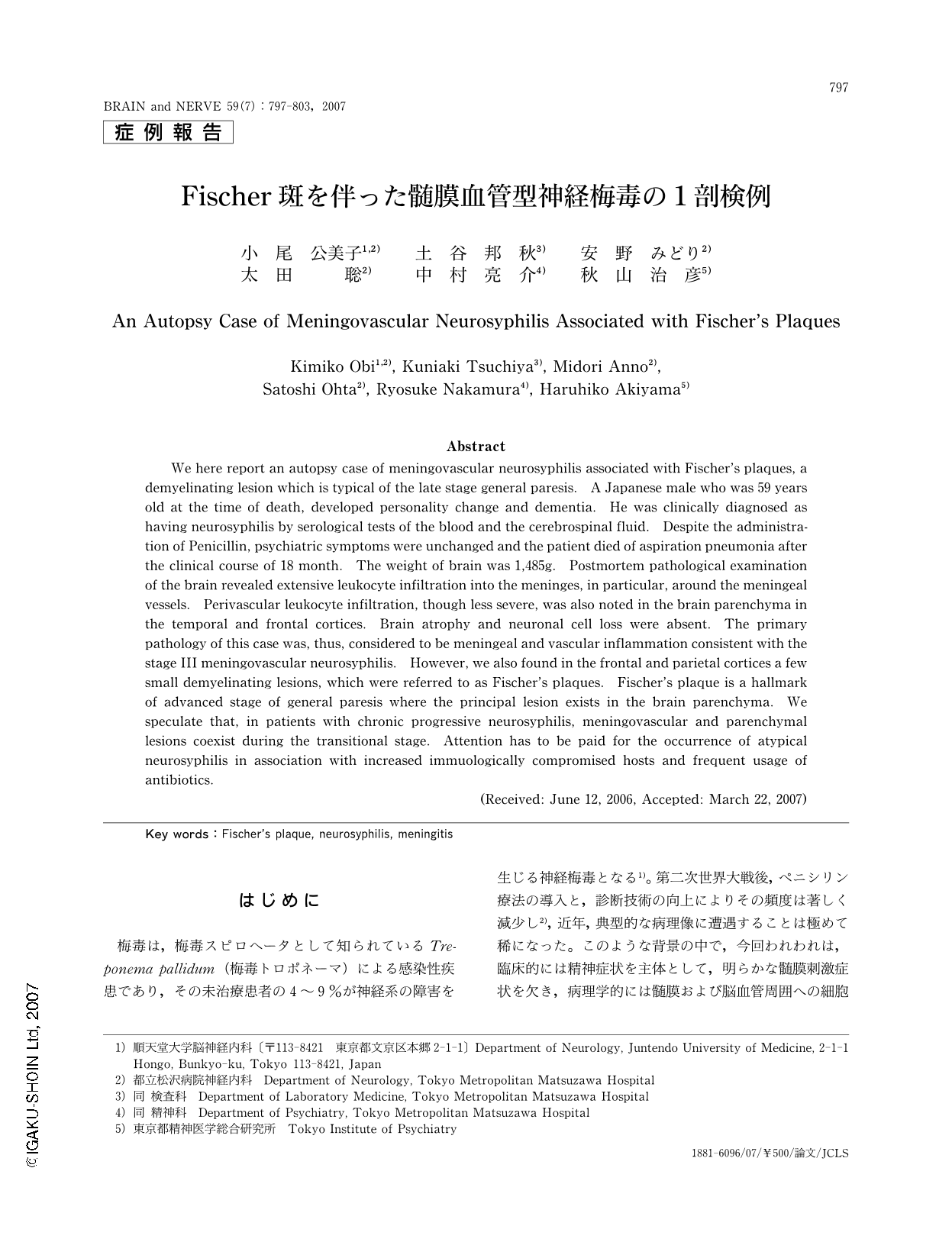Japanese
English
- 有料閲覧
- Abstract 文献概要
- 1ページ目 Look Inside
- 参考文献 Reference
はじめに
梅毒は,梅毒スピロヘータとして知られているTreponema pallidum(梅毒トロポネーマ)による感染性疾患であり,その未治療患者の4~9%が神経系の障害を生じる神経梅毒となる1)。第二次世界大戦後,ペニシリン療法の導入と,診断技術の向上によりその頻度は著しく減少し2),近年,典型的な病理像に遭遇することは極めて稀になった。このような背景の中で,今回われわれは,臨床的には精神症状を主体として,明らかな髄膜刺激症状を欠き,病理学的には髄膜および脳血管周囲への細胞浸潤とFischer斑とを同時に認めた神経梅毒の1症例を経験したので報告する。
Abstract
We here report an autopsy case of meningovascular neurosyphilis associated with Fischer's plaques, a demyelinating lesion which is typical of the late stage general paresis. A Japanese male who was 59 years old at the time of death, developed personality change and dementia. He was clinically diagnosed as having neurosyphilis by serological tests of the blood and the cerebrospinal fluid. Despite the administration of Penicillin, psychiatric symptoms were unchanged and the patient died of aspiration pneumonia after the clinical course of 18 month. The weight of brain was 1,485g. Postmortem pathological examination of the brain revealed extensive leukocyte infiltration into the meninges, in particular, around the meningeal vessels. Perivascular leukocyte infiltration, though less severe, was also noted in the brain parenchyma in the temporal and frontal cortices. Brain atrophy and neuronal cell loss were absent. The primary pathology of this case was, thus, considered to be meningeal and vascular inflammation consistent with the stage III meningovascular neurosyphilis. However, we also found in the frontal and parietal cortices a few small demyelinating lesions, which were referred to as Fischer's plaques. Fischer's plaque is a hallmark of advanced stage of general paresis where the principal lesion exists in the brain parenchyma. We speculate that, in patients with chronic progressive neurosyphilis, meningovascular and parenchymal lesions coexist during the transitional stage. Attention has to be paid for the occurrence of atypical neurosyphilis in association with increased immuologically compromised hosts and frequent usage of antibiotics.
(Received: June 12, 2006, Accepted: March 22, 2007)

Copyright © 2007, Igaku-Shoin Ltd. All rights reserved.


